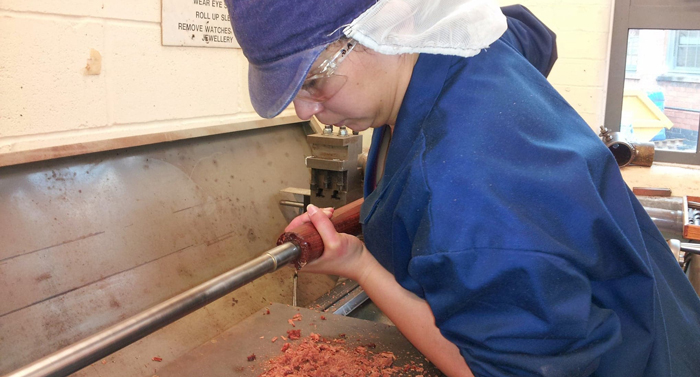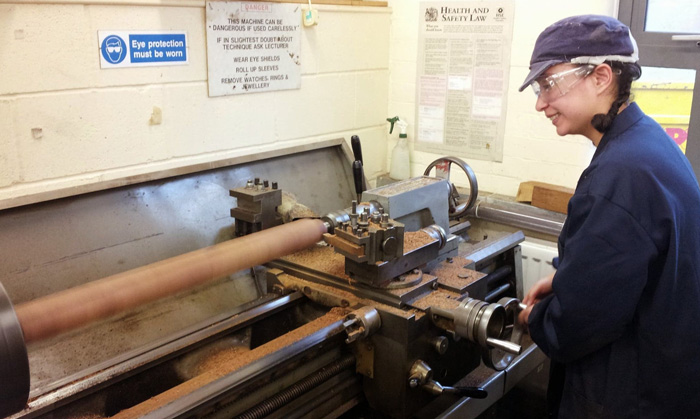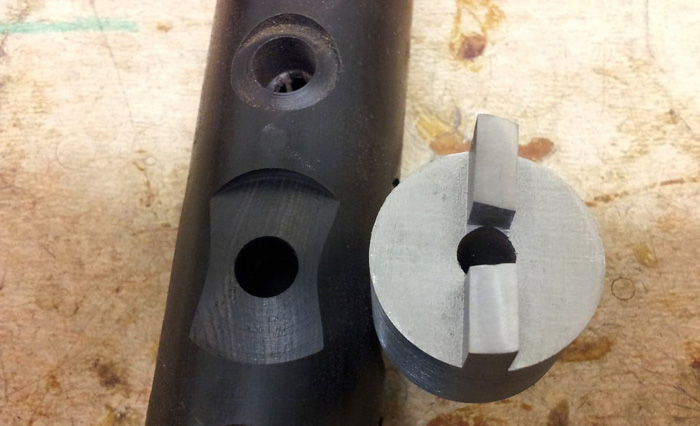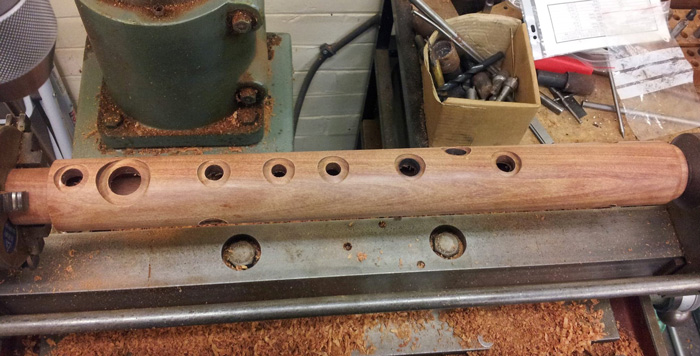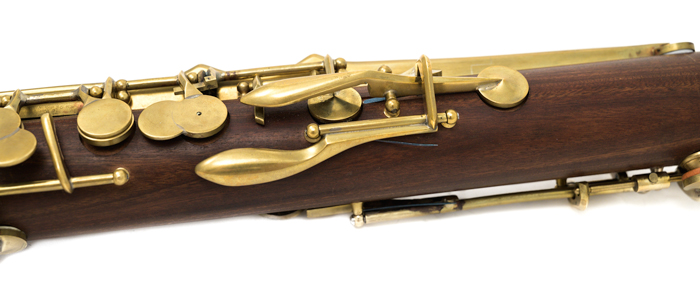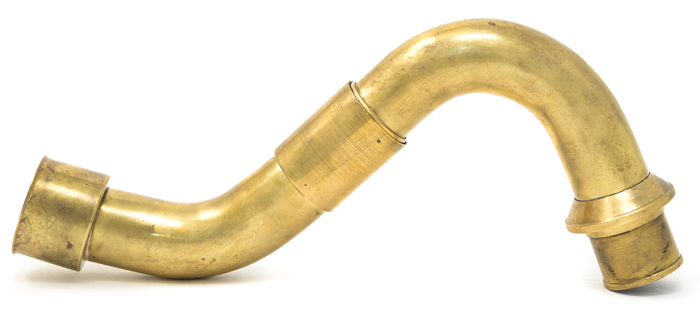Workshop Feature: Making a Bass Clarinet
28th February 2019We’re very lucky to have a unique team of experts in our Woodwind Workshop. Their skills cover everything Woodwind & Brass related, and we want to share some of their stories with you…
In this blog, we talk to Ana who joined us in 2016 after receiving her BA Hons in Musical Instrument Craft (Woodwind Making & Repair) from Newark Campus (Lincoln College) – the leading Repair training centre in the UK. This is the story of her Bass Clarinet, yes, the one she actually made from scratch!
Why Make a Bass Clarinet?
The course at Newark gives students the training and skills to repair musical instruments. As part of the course they also offer the opportunity to make an instrument in Years 2 and 3. Previously students had only made Clarinets, Flute and Soprano Sax – however Ana wanted to push the limits and asked if she could make a Bass Clarinet. Yes, this does sound ambitious, especially when you consider that the majority of tools required to make the instrument also needed to be made by the students.
However, with the tutor on board, the wood was ordered for the next year (yes it takes that long!) and Ana and a handful of fellow students set about planning. If you imagine they were quite literally starting from nothing, it suddenly seemed quite daunting!
Where to Start?
At the beginning of their second year they started investigating which model to base the instrument design on. After some exploration it was decided to base the design on the Buffet Prestige Model to Low C. Having secured access, via a friend, they set about measuring everything on the instrument. It’s worth bearing in mind they only had temporary access to this instrument so they had to make sure they had all the measurements required.
This sounds fairly straight forward, but just take a look at a Bass Clarinet, or indeed a normal Bb Clarinet and consider every single element you can see needs measuring. Not just the length, but the angle at which the keys protrude, the position of the springs, everything! That’s just the parts you can see, now consider everything you don’t immediately see. The tone hole positions and diameters, the internal bore size and shape throughout the tube.
The Production – Part 1
The primary starting point is on shaping the core wood. They started with two large pieces of wood per student (i.e. top and bottom joints). They had just enough material to attempt a Low C model which also meant more keywork!! The cutting of the wood took place over 2 or 3 phases. The wood started in rectangular blocks so had to be cut down into cylinders. Working on the lathe, large amounts of wood need to be cut off to shape the cylinder. After the initial cutting was complete the main joints were soaked in bore oil and left for months to be ‘treated’ by the oil.
The next steps (whilst the wood was in storage) was key making. This is, even in modern manufacturing, a very long and complicated process. Many keys have different shapes, angles and positioning challenges. In particular the throat A key for example has a very unique shape and curve compared to many other keys. Also, on Bass Clarinet there are many long keys, made up of long tubes and then the key arm and key cup.
When the wood was finally settled accordingly, the next stage was to cut the tone holes in the body. These are critical to the instrument being in tune and responding evenly across the range. When the tone holes were cut, the complicated process of making the key cups could start. Don’t forget the students were making all the tools to do all these relevant jobs! On a Bass Clarinet there are many key cup sizes, the students had to compromise on this for time and logistics so although the tone hole size couldn’t change, they could modify the key cup diameter, as long as it stayed large enough to cover the hole.
The Production – Part 2
At this point, the tone holes are all drilled. The keywork is ongoing in production with key arms, rods and touch-pieces also being made. Ana told us that the most enjoyable part was shaping the individual key pieces. However, the hardest part of the whole process was definitely lining up each element that made one key and soldering them all at the correct angles to work correctly over the toneholes. Remember, they were doing this without a Bass Clarinet in front of them to copy!
Ana also had to machine and finish all the rod screws for each key. Pillars also needed to be produced so they could hold the key system in place. All the keys, and indeed the neck, were made from brass. This involves many hours of hard labour!
The Production – Part 3
Ana chose to modify the angle of the Buffet neck slightly because some players prefer it at a different angle. During the production of the neck, not only did they have to make the tools to bend the neck, but they had to use lead to fill the tube and then bend it into shape. Because of the lead element this had to be done extremely carefully and with many safety precautions in place.
Sadly Ana ran out of time to make a bell, however they did experiment with a couple of different options including a fibreglass bell. This still remains one final part of the puzzle for her to complete!
In Summary
The main requirements on the course were actually to make the main tube and produce the keys in a boehm system. Also, the students were assessed on their problem solving skills and the abilities to make the actual tooling for each process in the production.
If we fast forward to the present day, there are still some elements for Ana to finish. A few key pieces are still required, the pillars need drilling for the springs, the speaker key needs to be added to the neck and of course…the bell!

Although the students had this project over 2 years, there was only really around 1 day per week in term time to complete their task, in-between their other training. Despite this, Ana learned a great deal over the period of production and importantly had to stay mentally flexible to solve many issues that sprang up. It’s this flexibility and lateral thinking that we love to see in our workshop where different types of jobs come in all day, every day!
If your woodwind instrument could do with some love and attention, please do get in touch with our workshop team via this link.
